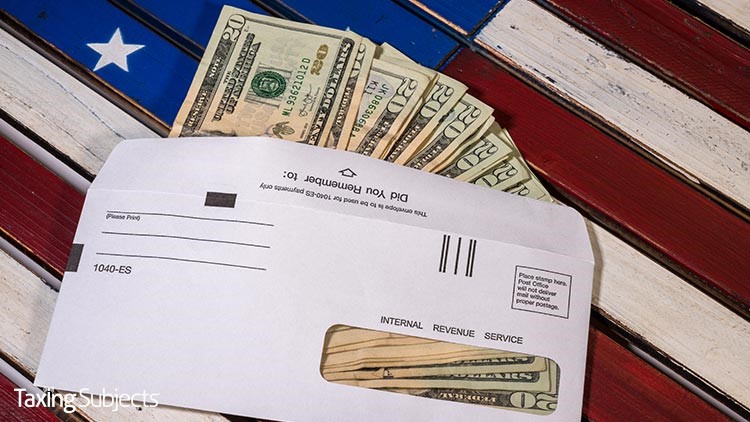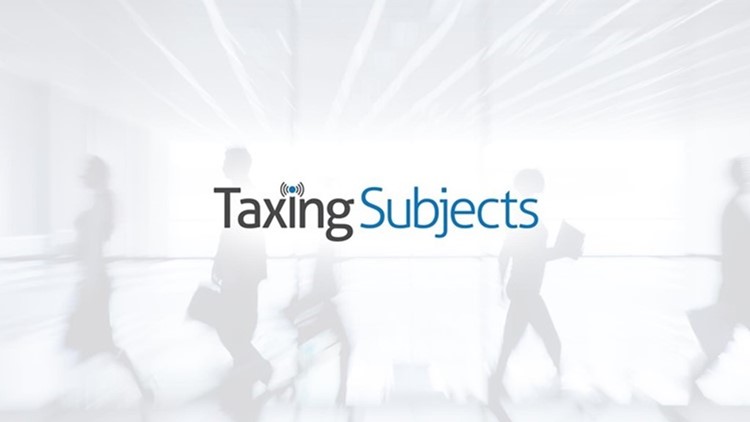by | Jun 17, 2020 | Tax Tips and News
Will PPP borrowers be able to receive partial loan forgiveness?
Before the ink dried on the latest COVID-relief legislation, tax pros and small business owners alike had questions about the Paycheck Protection Program Flexibility Act. Despite being designed to expand access to the PPP loan, the bill included a change that seemed to eliminate partial loan forgiveness. Luckily, the latest regulations published by the Department of the Treasury put those concerns to rest.
The trouble arose from the Section 3 language titled “LIMITATION ON FORGIVENESS,” which reads:
“To receive loan forgiveness under this section, an eligible recipient shall use at least 60 percent of the covered loan amount for payroll costs, and may use up to 40 percent of such amount for any payment of interest on any covered mortgage obligation (which shall not include any prepayment of or payment of principal on a covered mortgage obligation), any payment on any covered rent obligation, or any covered utility payment.”
Since there was no mention of partial forgiveness in the actual language of the legislation, it appeared that borrowers who failed to use 60 percent of the loan on payroll costs would not have any of the loan forgiven. That led the Department of the Treasury and Small Business Association to issue a joint statement, which previewed the regulations published this week: “Business Loan Program Temporary Changes; Paycheck Protection Program – Revisions to First Interim Final Rule.”
The regulations clearly outlined how partial loan forgiveness would be implemented. Borrowers still have to use 60 percent of the loan on payroll costs to receive full forgiveness, and partial forgiveness will now require 60 percent of the forgiven amount go toward payroll. Here’s an example from page 10:
“If a borrower receives a $100,000 PPP loan, and during the covered period the borrower spends $54,000 (or 54 percent) of its loan on payroll costs, then because the borrower used less than 60 percent of its loan on payroll costs, the maximum amount of loan forgiveness the borrower may receive is $90,000 (with $54,000 in payroll costs constituting 60 percent of the forgiveness amount and $36,000 in nonpayroll costs constituting 40 percent of the forgiveness amount).”
Sources: “Business Loan Program Temporary Changes; Paycheck Protection Program – Revisions to First Interim Final Rule”; “Joint Statement by Treasury Secretary Steven T. Mnuchin and SBA Administrator Jovita Carranza Regarding Enactment of the Paycheck Protection Program Flexibility Act”; H.R. 7010
– Story provided by TaxingSubjects.com
by | Jun 17, 2020 | Tax Tips and News
An unforeseen consequence of the COVID-19 pandemic is pushing the IRS due date for some payments back a bit. The Internal Revenue Service is delaying the due dates on some of its paper balance-due notices because the IRS wasn’t able to mail the preprinted notices due to office closures.
As the IRS reopens its office locations, the notices will be delivered to taxpayers over the next few weeks, so some of the notices will contain due dates that have already passed.
The agency says it would take too long to reprogram IRS systems and then generate new notices, so the IRS is instead including an insert explaining that the due dates printed on the notices have been extended.
Don’t panic!
“Due to the challenges of the ongoing Coronavirus Disease 2019 (COVID-19) Pandemic, we were unable to mail the notice included in this envelope on the date listed on the notice,” the insert reads. “In addition, the date on the notice by which you are asked to pay may have already passed by the time you receive it. Do not be concerned about these dates.”
The insert stresses, “You have additional time to pay the amounts shown on your notice to avoid incurring additional liabilities.”
The new payment due date will be either July 10, 2020, or July 15, 2020, depending upon the type of tax return and original due date. The insert outlines the correct payment due dates:
“A. If the amount due on your notice is for an income, gift, estate, or Form 990-PF or Form 4720 excise tax return that was due on or after April 1, 2020 and before July 15, 2020, (such as a Form 1040 normally due April 15, 2020), the Treasury Department and the IRS postponed the deadline for making your payment to July 15, 2020. If the amount due (as provided on your notice) is not paid by July 15, 2020, penalty and interest will begin to accrue after July 15, 2020. To avoid penalty and interest, pay the amount due by July 15, 2020.”
“B. If the amount due on your notice is for a return that was due before April 1, 2020, or an employment or excise tax return due on or after April 1, 2020, you will not be charged additional penalty or interest if you pay the amount due (provided on your notice) by July 10, 2020.If taxpayers have questions about their balance due, they should visit the website or call the phone number listed on their printed notice.”
If taxpayers have questions about their balance due, they should visit the website or call the phone number listed on their printed notice.
The IRS cautions, however, that phone lines are still very busy as the IRS works to ramp up its operations.
Source: IRS Statement on Balance Due Notices
– Story provided by TaxingSubjects.com
by | Jun 12, 2020 | Tax Tips and News
The American Institute of CPAs (AICPA) has requested the Internal Revenue Service “address the use of electronic options to interact with the IRS and electronically file income tax returns.”
The request comes in a letter the AICPA filed with the IRS recently. It acknowledges that while e-signature relief is needed in light of the COVID-19 pandemic, AICPA believes it’s important that a permanent solution is reached that will let taxpayers and tax pros “embrace the digital and global environment and move away from manual, paper-based processing.”
While the pandemic has led the IRS to temporarily allow its employees to accept e-signatures on documents related to examination and collection of tax liabilities, AICPA believes the IRS should expand e-signature relief and make it permanent.
It all goes back to the Internal Revenue Code.
The Internal Revenue Code (IRC) requires any tax return, statement, or other document be signed in accordance with forms or regulations prescribed by the Secretary of the Treasury.
Legislation also has directed the Secretary to develop procedures for acceptance of signatures in electronic form. In addition, the Secretary may waive the requirement of a signature on an electronically filed tax return, or provide for alternative methods of signing.
“We appreciate the care taken to safely re-open the IRS offices and understand why the IRS has encouraged taxpayers to use electronic options to interact with the IRS and to e-file income tax returns. However, in the interest of the health and safety of taxpayers, tax professionals, and IRS employees, we urgently request that the IRS update its e-signature guidance and authentication requirements,” AICPA’s letter states.
What is the AICPA’s plan for e-signatures?
The Institute has requested that the IRS modify the e-signature program and identity authentication requirements in four key areas:
- Expand use of Taxpayer Electronic Signatures
- Rely on IRM for Identity Authentication of Taxpayers by Electronic Return Originators (EROs)
- Expand Notice 2007-79
- Expand Notice 2004-54
“In the interest of the health and safety of taxpayers, tax professionals, and IRS employees, we recognize the need to update the federal e-signature guidance and authentication requirements relating to standard filing procedures,” said AICPA Vice President of Taxation, Edward Karl, CPA, CGMA. “These measures will simplify the tax filing process while ensuring the safety and security of taxpayer information is maintained.”
– Story provided by TaxingSubjects.com
by | Jun 11, 2020 | Tax Tips and News
If any of your clients are one of the 4 million filers set to receive their Economic Impact Payment as a Visa prepaid debit card, they may be interested in one of the latest Internal Revenue Service press releases. The announcement covers a number of topics related to the new EIP Card Program, including some of the questions most frequently asked by EIP recipients.
What is an EIP Card?
An EIP Card is a Visa prepaid debit card that arrives in a “plain envelop from ‘Money Network Cardholder Services.’” The IRS made a point of explaining that users will not be charged a fee for normal use, like retail purchases, ATM withdrawals, and bank account transfers. Likewise, there won’t be a fee for using the Money Network mobile app or customer service number to check the card balance.
What are the most frequently asked questions for EIP Card holders?
Many taxpayers want to know if they are able to ask the Treasury to send their Economic Impact Payment to an existing prepaid card. The answer depends on a few factors:
- Is your payment already on the way?
- Can you “reload” funds on your current prepaid card?
- Does your prepaid card have an account number and routing number?
Obviously, a payment that has already been sent can’t be loaded onto a prepaid card by the Treasury prior to being received by the filer. As for whether the Treasury can put the money on your current prepaid card, the agency says that’s possible if it has an associated account number and routing number.
“You would need to check with the financial institution to ensure your card can be re-used and to obtain the routing number and account number, which may be different from the card number,” the IRS explained. “If you obtained your prepaid debit card through the filing of a federal tax return, you must contact the financial institution that issued your prepaid debit card to get the correct routing number and account number.” However, the IRS said you can’t use the account number and routing number listed on a recently filed tax return.
Other taxpayers simply wanted to know if they could request their payment could be issued on an EIP card. Unfortunately, the IRS said, “not at this time.”
To read other EIP frequently asked questions, visit IRS.gov. And for more information about EIP Cards, check out EIPCard.com.
Source: IR-2020-105
– Story provided by TaxingSubjects.com
by | Jun 10, 2020 | Tax Tips and News
Individual taxpayers and corporations have some extra breathing room for paying their 2020 estimated taxes. The IRS reminds individuals and corporations alike that the estimated tax payments normally due on April 15 and June 15 have been pushed back to July 15, without penalty.
An IRS news release says the shift came in response to the COVID-19 pandemic.
“This relief applies to federal income tax returns and tax payments (including tax on self-employment income) otherwise due April 15, 2020. This relief does not apply to state tax payments or deposits or payments of any other type of federal tax.”
Who needs to pay quarterly estimated tax?
Most often, self-employed taxpayers need to pay quarterly installments of estimated tax. This is especially true of those engaged in the sharing or “gig” economy. A substantial part of their income isn’t subject to withholding. Other income not subject to withholding includes interest, dividends, capital gains, alimony, and rental income.
Some taxpayers are under special rules: Farmers, fishermen, casualty and disaster victims, those who recently became disabled, recent retirees, and those whose income is uneven during the course of the year all are governed by special rules.
For self-employed taxpayers, underpaying taxes is a very real problem. They can avoid a penalty for underpaying by either owing less than $1,000 at tax time, or by paying most of their taxes during year. In 2020, that means making payments of at least 90% of the tax expected on their 2020 return.
The IRS likes to say that income taxes are pay-as-you-go. That means taxpayers need to may most of their taxes during the year as income is received. There are two ways to do that:
- Withholding from pay, pension or certain government payments such as Social Security; and/or
- Making quarterly estimated tax payments during the year.
How do I estimate tax withholding?
If a taxpayer has salaries and wages to report, they can avoid having to pay estimated taxes by asking their employer to withhold more tax from their earnings. They would file a new Form W-4 to do this.
For the taxpayers who receive a paycheck, the IRS Tax Withholding Estimator can help them make sure the right amount of tax is being withheld from their pay.
The Estimator is now more mobile-friendly than before. This tool offers workers—as well as retirees, self-employed taxpayers and others—a clear, step-by-step method for checking their withholding. It protects against having too little tax withheld and thus facing an unexpected tax bill or penalty at tax time next year.
When it comes to actually paying estimated taxes, Form 1040-ES, Estimated Tax for Individuals, includes instructions to help taxpayers figure their estimated taxes. To pay electronically, check out IRS.gov/payments.
The IRS offers two free electronic payment options. Direct Pay allows taxpayers to schedule their estimated federal tax payments up to 30 days in advance. The Electronic Federal Tax Payment System (EFTPS) allows payments up to 365 days in advance.
Help for estimated taxes is available on IRS.gov. For example, taxpayers can search the Interactive Tax Assistant, Tax Topics, Frequently Asked Questions, and Tax Trails to get answers to common questions.
Source: IR-2020-117
– Story provided by TaxingSubjects.com





